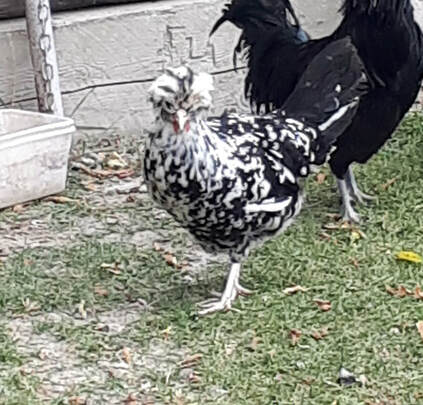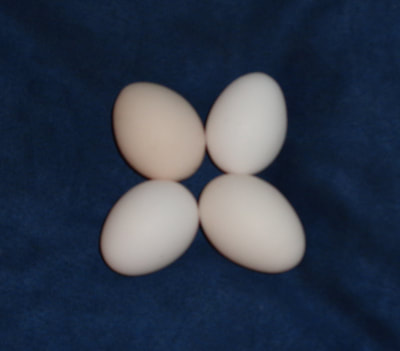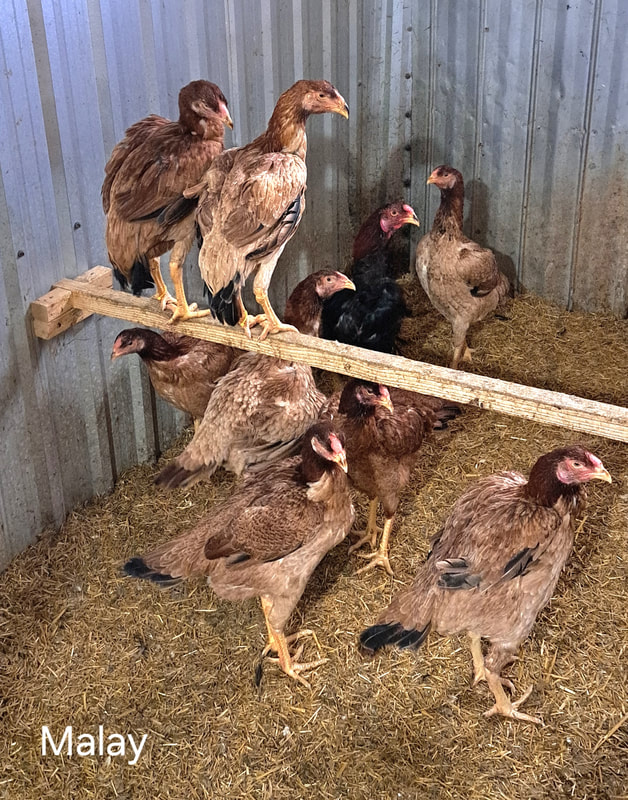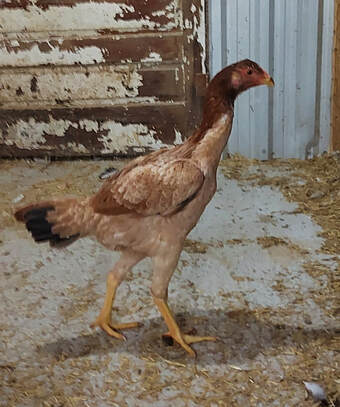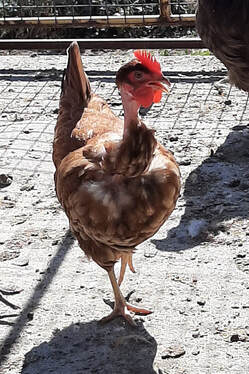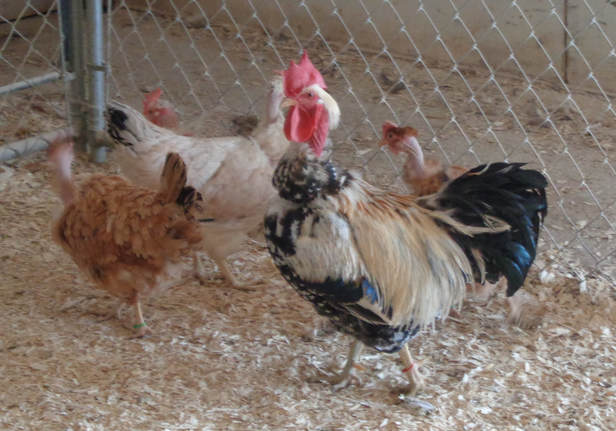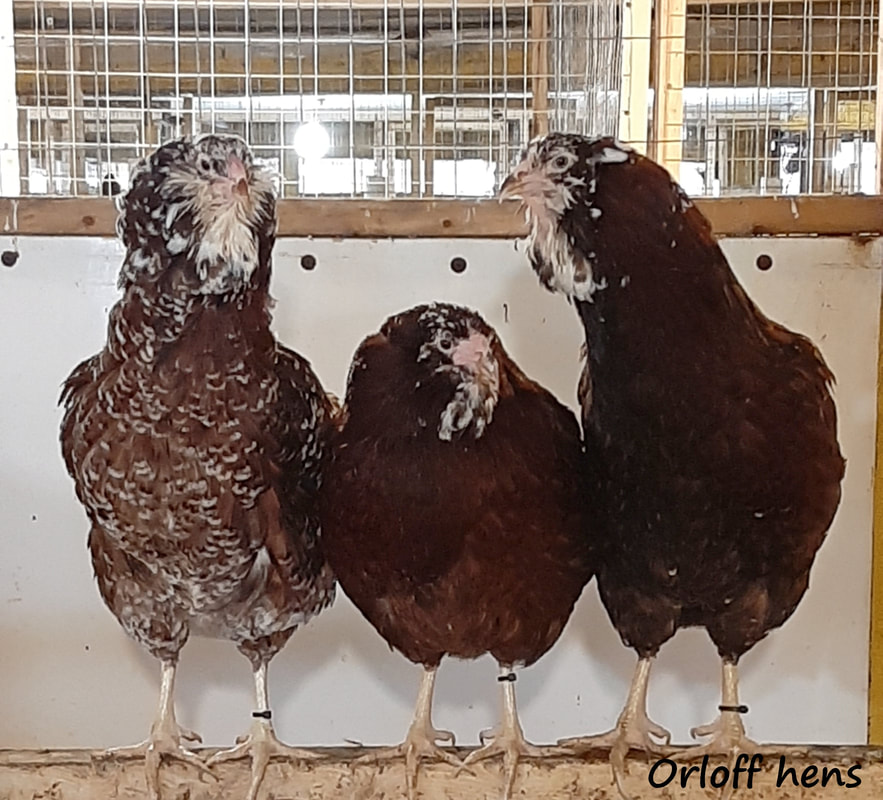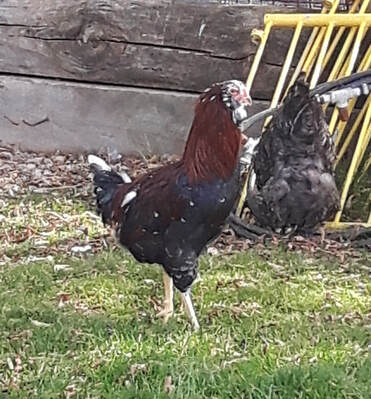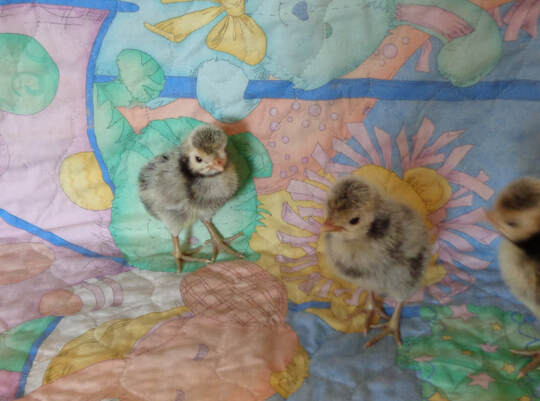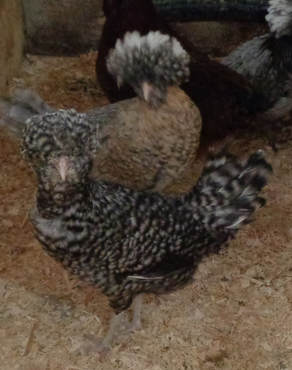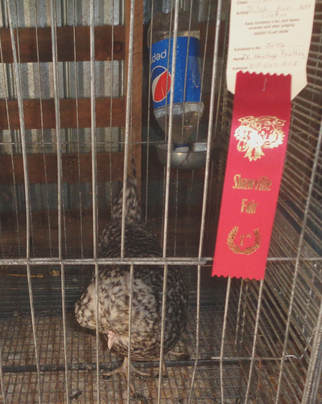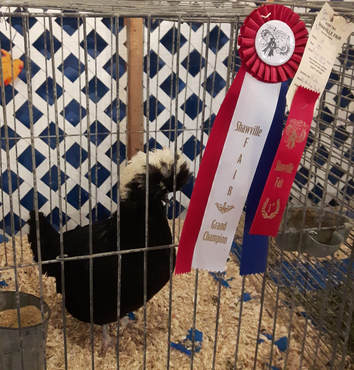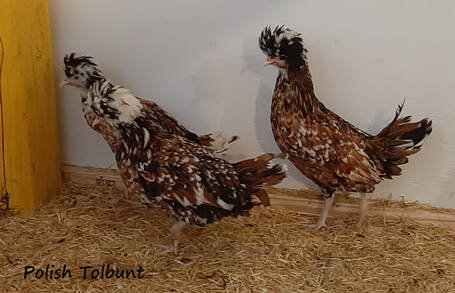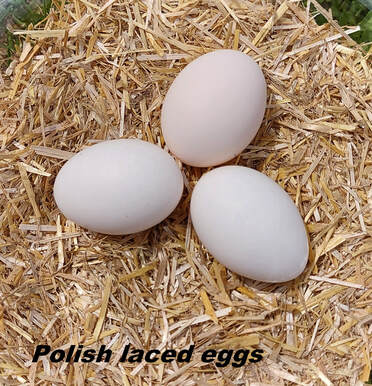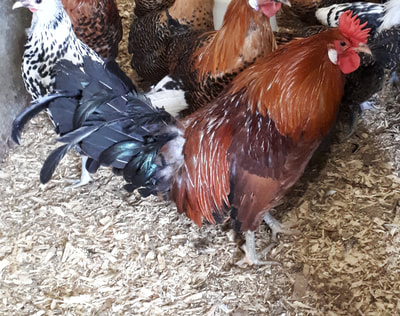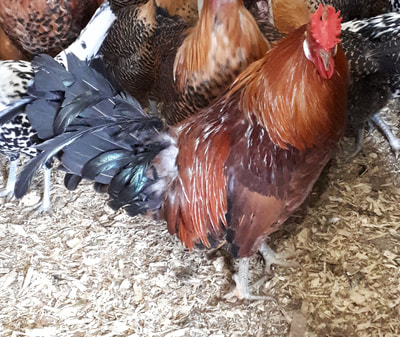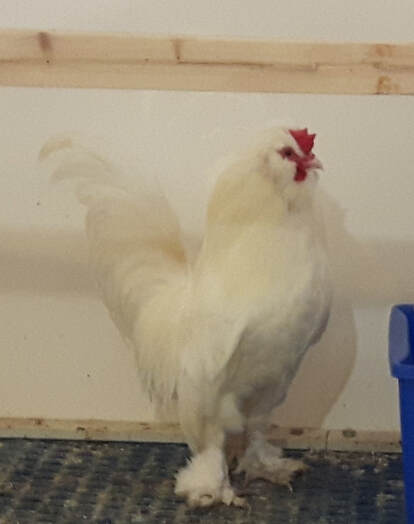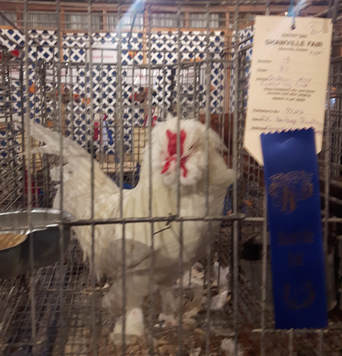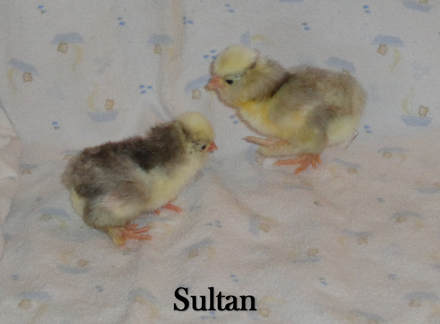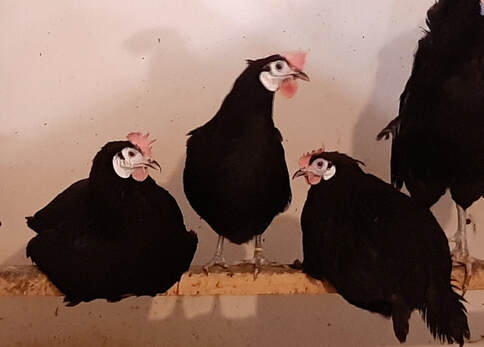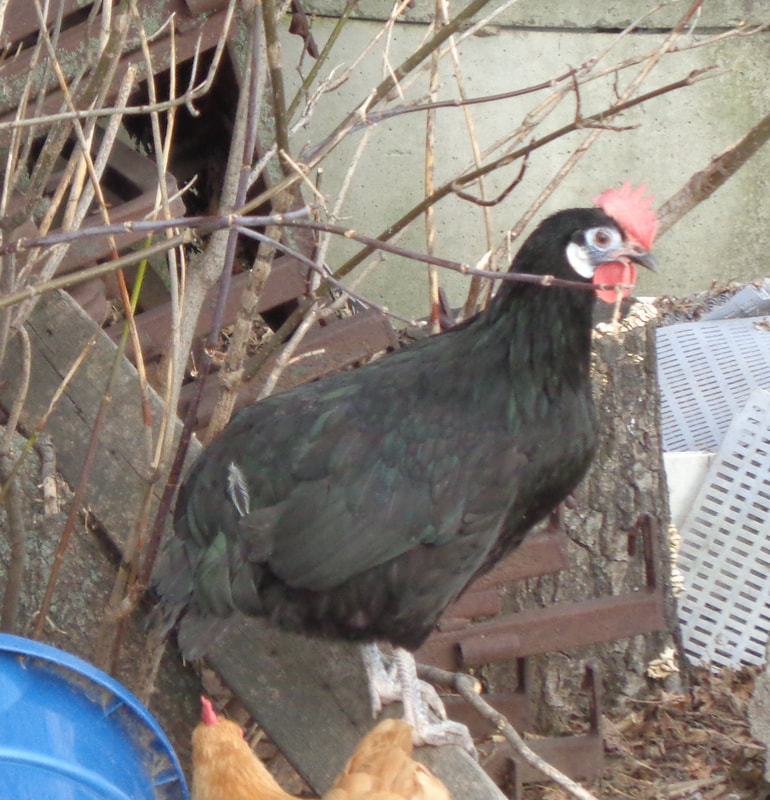Brabanter
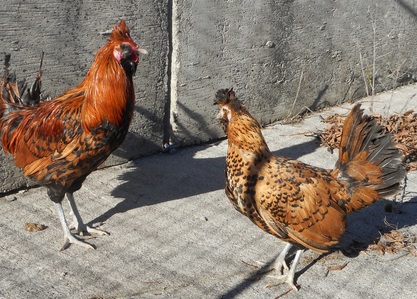
Brabanter, also called Brabanconne is a Dutch breed originating in the historic region of Brabant, which straddles Belgium and the Netherlands. It is an ancient breed and is shown in many paintings by the Dutch animal painter Melchior d’Hondecoeter. One painting is called “Hens and Ducks” and another is “Hen and Chicks” which portrays Brabanters. This is evidences of its existence dating as far back as the 1500’s. This breed was declared extinct by the early 20th century but dedicated Dutch poultry men gave the breed a second chance. The Brabanter is still considered very rare even in its native region. Hens are good layers and lay about 200 large white eggs and lay though out the winter and are not known to be broody. They are considered calm but lively and very intelligent. The breed stands confinement well and is winter hardy. Weight of the males 51/2 lbs and females 4lbs. In Europe Brabanters comes in many colors but in North America Gold and Crème are the most common color. We carry the gold spangled and cream.
Houdan
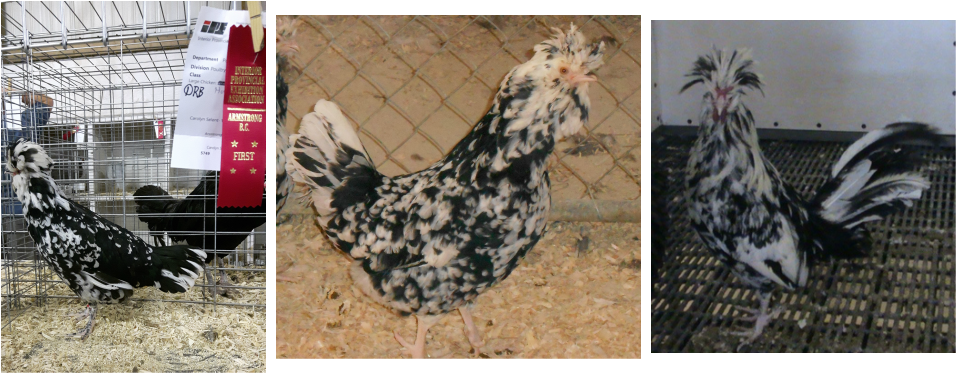
Description:The Houdan or Poule de Houdan is an old French breed. It is named for the area of France where it originated, the commune of Houdan, in the department of Yvelines to the west of Paris in Normandy. The Houdan has an unusual butterfly-shaped comb and is one of the breeds that have 5 toes instead of 4. The origins of the Houdan breed are unknown; as they predate modern agricultural writings, little can be said for certainty but it is believed that the breed was developed over centuries using the common five-toed fowls that existed during the time of the Roman author Columella, AD4 to AD 70. These once common fowl which was present in France and Belgium were combined with old crested race breed of chickens found in Caux, Normandy to create the Houdan breed. The Houdan is recognized in most countries in the Mottled color variety or Cailloute, ‘pebbled” in France with a crest and beard, similar to a Polish or Crevecour. This is its original color. It also comes in white but this is extremely rare. They are a medium sized fowl. Roosters weigh 8lbs and hens 6.5 lbs. In France it was kept mainly as a dual purpose bird and for part of the 1800’s one of France’s main meat breeds. The Houdan today is primarily a rare show bird. How ever with a fairly quick rate of maturity and the ability to lay a respectable number of white eggs that can equal a Leghorn chicken in dry sunny conditions, it is a great barnyard addition. They are efficient in food to egg ratio and also bear confinement well. They are a docile breed very easy to handle. The chicks grow fast are of medium hardiness. Houdans are easily fattened and they made a fine table bird. The breed has achieved the much sought after “Label Rouge” certification for excellence in taste and production in France. We carry the original Mottled color.
Conservation status: Threatened
Conservation status: Threatened
La Fleche

The La Fleche is a rare French dual-purpose breed that dates back at least 500 years. Their name literally means " the Arrow". It is very difficult to find in North America. The La Fleche is sometimes called Devil Bird because of their black plumage and parallel upright V-comb that looks like horns. They have good foraging abilities and are non-aggressive. The breed was developed in the Valley of La Sarthe, where the town of La Fleche is located not to for from the racing city of La Mans. They have been bred there for a long time and have been known since the 15th century but believed to be much older breed. The bird weighs 6-9 lbs and is valued for it’s tasty white meat. La Fleche are hardy birds. Hens are not known to be broody but will lay though out the winter, laying approx 200 large white shelled eggs. This is truly a unique looking bird that would complement any backyard flock . Color varieties are Black, White, Cuckoo and Blue-laced. We carry the Black variety.
SOLD OUT for 2024
SOLD OUT for 2024
Malay
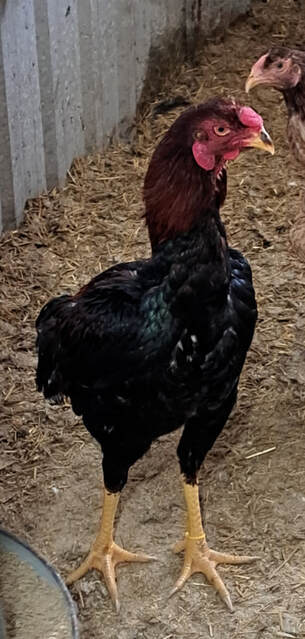
The Malay is an ancient game fowl breed arriving in England from the remote South East of Asia around 1830. It’s said that it is descended from the Kulm fowl. They are very tall around 3 feet, this height can take up to 18 months to reach and their carriage is very erect. The breed is considered hard- feathered and very muscular. They are rugged and vigorous and noted for long life. Malay’s have a red strawberry comb, with barely no wattles, a rather fierce look and prominent brow and yellow skin. They are very hardy and active, preferring free range. Males can be very protective of the hens and there can only be 1 male in the flock or fights will occur as they are intolerant of another male. The crow of the rooster is hoarse, short and monotonous and all these are reminiscent of a roar. Roosters weigh approx. 9 lbs and hens 7 lbs. They were once used for racing with their very long legs and upright posture. They can become quite affectionate toward their owners and be tamed. Hens are seasonal layers of medium tinted brown to dark brown eggs only laying 50-100 in a year. Hens occasionally go broody and are good mothers but with their long legs and hard feathers they have difficulty covering many eggs so not the best choice for hatching their own eggs. They come in many colors Black breasted red, Pyle, Black, Spangled, White and Wheaten. They were admitted into the APA in 1883. As cock fighter is no longer practiced this breed is now considered in the ornamental group. We carry Standard.
Conservation status: Critical
Conservation status: Critical
Naked Neck
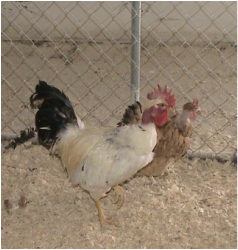
The Naked Neck is an old dual purpose breed developed in Transylvania region of central-northwestern Romania but their origin is unclear. Thought to have been brought from Asia at the end of the ninth century by Hungarian conquerors, mostly developed in Germany. The breed is also called Turken, Kaalnek and Transylvanian Naked Neck. It is fairly rare in the US but common in Europe. They are generally a large fowl but there is a bantam variety. The breed is raised mostly for meat production with roosters weighing 3.9 kg and hens 3 kgs. Hens will lay approx. 150 large brown eggs per year and normally do not go broody. They are very hardy active birds, great foragers and resistant to disease but also do well in confinement. They do well in all climates from very hot to very cold but may need a heat lamp in severe cold. The breed has 50% less feathers than other breeds and this is because of a random genetic mutation that causes the overproduction of a feather blocking molecule called BMP 12, a new DNA study shows. This molecule also improves breast size and reduces heat stress, making this breed very good for broiler production in hot climates. With 50% less feather they are much easier to pluck. Naked Necks have a single red comb and large wattles with yellow legs and feet, but in darker colors legs and feet can be slate, they are gentle and easy to handle. They were recognized by the APA in 1965 and come in a variety of colors: Red, Blue, Cuckoo, Black, White and Silver.
Conservation status: Study
Conservation status: Study
Orloff
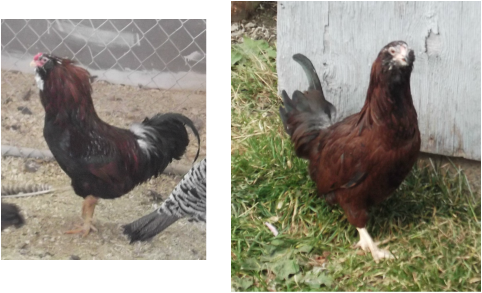
The Russian Orloff originated in Persia {modern day Iran }. It was know all across Asia in the 1600’s. The breed was named for Alexei Grigoryevich Orlov, an 18th century Russian Count who also developed Orlov Trotter and Orlov-Rostopchin horses and is credited with the importation and promotion of the Orloff chicken breed. They have small cushion combs, small earlobes and minuscule wattles. The chief distinction of the Russian Orloff chicken, besides its looks, is the extreme hardiness of the breed. This is a breed that can tolerate extreme cold and foul weather and will survive where other breeds will not. They were once represented in the American Poultry Association’s Standard of Perfection from 1875 to 1894 when it was dropped due to lack of interest. Orloff’s are a dual-purpose breed, prized for their meat but hens are reasonable layers of approx 200 light brown eggs per year and they don’t usually go broody. The breed is tall well feathered with a game-like appearance. The head and neck are thickly feathered. Roosters weigh approx 8.5 lbs and hens 6.5 lbs. They are noted to have a clam temperament and do well free range or in confinement. The breed comes in Black [ once very popular is seldom seen anymore }, Spangled, White, Black Breasted red { wheaten ], Buff, Mahogany, Cuckoo and Mottled. We carry Spangled and Mahogany running together.
Conservation Status: Threatened
SOLD OUT
Conservation Status: Threatened
SOLD OUT
Polish
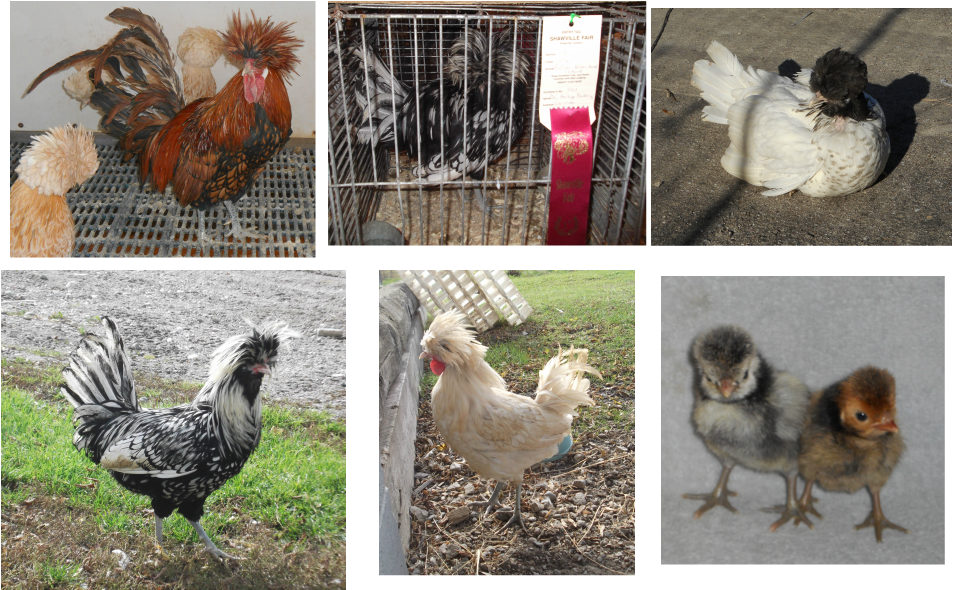
Description: There is some controversy on the origin of the Polish chicken called Poland in Europe where it was thought to be developed in The Netherlands where is was declared a breed in the 16th century but this is unclear as one theory believes the ancestors were brought to Eastern Europe by the Asian Mongols during medieval times thus they could have originated in Poland where they were called Czubatka Staropolska. For centuries Poles kept their Czubatka’s in small farms all over Polish territories. In the Polish language Czubatka simply indicates a hen or rooster with czub (a tuft of feathers growing on top of the head), the word ‘Staropolska’ meaning ‘old-polish’. Just to mention the Czubatka chicken has looked exactly like Polish chickens do today long before it was introduced to Dutch breeders as Polish chickens. They were introduced to America in the 1830-1840’s and three varieties were accepted into the A.P.A. in 1874 other varieties were added in 1883,1938 and 1963. Polish have large crests and V-combs. They are easily tamed and make great project bird for children but can be timid because of their large crest which can limit their eyesight. They are primarily a show bird but once was a production layer. Hens are noted for their white eggs approx. 200 per year but this varies from hen to hen and they rarely go broody. They are fairly hardy and handle most climates but don’t do well getting wet. They are also usually on the bottom of the pecking order. Chicks need to be pampered for the first few weeks of life. Roosters weigh approx. 2-3 kg’s and hens 2-2.5 kg’s. There is also a Bantam variety. They come frizzed or straight feathers, bearded and non-bearded varieties available. They come in a large variety of colors, Some not recognized by the A.P.A.: Self Black, Self Blue, Splash, Cuckoo, White Crested Black, White Crested Blue, White Crested Cuckoo, Buff-Laced [Chamois], Gold and Silver Laced and a couple new varieties Candy Corn, Crele and Tolbunt.
We carry buff laced, gold laced & silver laced running in one breeding pen. Cuckoo and white cap black in another pen and Tolbunt.
Conservation status: watch
We carry buff laced, gold laced & silver laced running in one breeding pen. Cuckoo and white cap black in another pen and Tolbunt.
Conservation status: watch
Sicilian Buttercup
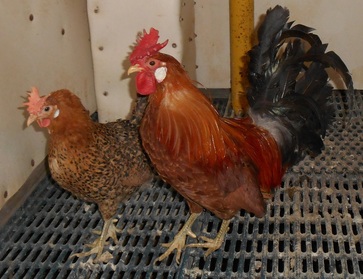
Description: Developed on the island of Sicily, but greatly improved upon after their arrival in the US in the late 1900's. The pullets mature early and start laying small pullet eggs long before they reach their full weight, approx 3 1/2-4 lbs and rooster 4 1/2-5 lbs. Hens lay a white eggs and are non sitters. The name Buttercup comes from the combination of the unique comb of the rooster in the shape of a cup and the golden buff color of the hens plumage. They are excellent converters of feed to eggs. They are good foragers and can almost find all their own needs if free ranged. The Buttercup is a friendly curious bird if handled often and gently. Coops should be kept above freezing for them to protect the unique comb. The gold Buttercup is a beautiful bird.
Conservation status: watched
Conservation status: watched
Sultan
|
The Sultan known as Serai Tavuk in its native Turkey. Serai meaning “Sultans palace” and Tavuk meaning “Turkish fowl” hence the name Sultan’s fowl or Sultans. They have always been used primarily as ornamental birds having been kept in the gardens of the Ottoman Sulanate. Because of their feet, legend says that they didn’t hurt the garden grass. The breed was first exported to England in 1854 and then to the U.S.A in 1867. They are truly a rare sight to see. Sultans have decorative plumage with large puffy crests, beards, muffs, long tails and profuse foot feathering. Their small v-comb is entirely hidden under feathering. Sultans are also one of the minority breeds that have 5 toes on each foot. Males weigh approx 6 lbs and hens 4 lbs. We have the standard size but there is also a bantam size. Hens lay a white egg and are said to be good layers that don’t go broody. Sultans are content to be kept in confinement, they even make a good house pet chicken that doesn’t mind being in a cage. They don’t do well in wet weather because of their feet feathering. They should also have a heat light for winter. They are a very attractive breed known to be friendly with interesting personalities but sometimes will be timid.
This breed is on the Critical list: There are 3 color varieties : White, Black, and Blue . White is the only color recognized APA. We carry White. SOLD OUT |
Sumatra
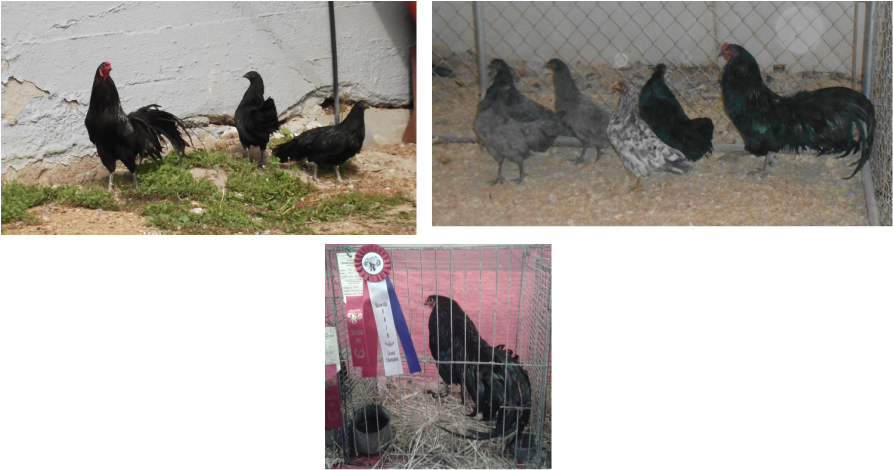
Description: This breed was originally from the Isle of Sumatra, Java and Borneo in Indonesia. It developed living wild and being shaped by its environment. They were first imported to the U.S. in 1847 by J.A.C. Butters. The Black variety was inducted into the A.S.P. in 1883. The breed was first promoted as a fighting breed for which they were not truly well-suited. Sumatra’s are now primarily an ornamental breed kept for their lustrous attractive flowing feathers and stately appearance. Facts about the breed: Rooster can have multiple spurs on each leg. Roosters weigh 2.26-2.70 kg’s and hens about 1.80kg’s. They breed seasonally with great fertility and start later in the year than other breeds. Hens lay approx 100 tinted medium sized eggs per year. They are very broody and are great Moms. The breed is considered a primitive one and Sumatra’s retain a strong flying ability. Both adults and chicks are hardy and chicks are easy to raise and are active and alert. They can launch themselves straight up in the air to avoid danger. Recognized colors are Black and Blue but un-standardized Splash can occur naturally from breeding blue to blue. There is now also a Dun variety. We carry Black, Blue, Splash, Paint and Platinum colors running together.
Conservation List: Watch
White Face Spanish

The White-Faced Black Spanish breed of chicken is truly the aristocrat of the chicken world. Originally from Spain called Cara Blanca or The Fowls of Seville in its native country. The Spanish chickens have been widely recognized for their laying abilities of very large white eggs, gaining recognition for this even before 1816. Eggs from the Spanish chickens have been recorded in weights ranging from 2.75 ounces to 4.25 ounces in 1852. What sets this breed apart is the tremendous white ear lobes and white on the face. The Spanish chicken is a lustrous greenish black in color with tight fitting feathers and a flowing tail, large red comb that may get frostbite. Males weigh 5.5lbs and hens 4 lbs. They are slow to mature. They are good foragers but can handle confinement. They are active and downright charming and highly people - oriented. They don’t go broody. In the days before commercial egg farms the Spanish was found on many small farms in the U.S. and were called ‘ clown faced chickens’. It is distributed throughout the world, but is rare in its native Spain. Spaniards brought the first birds to the Caribbean region and it is among the oldest breeds in the U.S.A. During the Colonial period, they were very popular in the South. They are considered a bit flighty. They are a fragile breed and chicks can be a bit hard to raise and should be raised with other fragile breeds or with bantams but once they are adults they are hardy. They are so unique and worth the time. We will have black and new for this year Blue.
Status list: Critical
